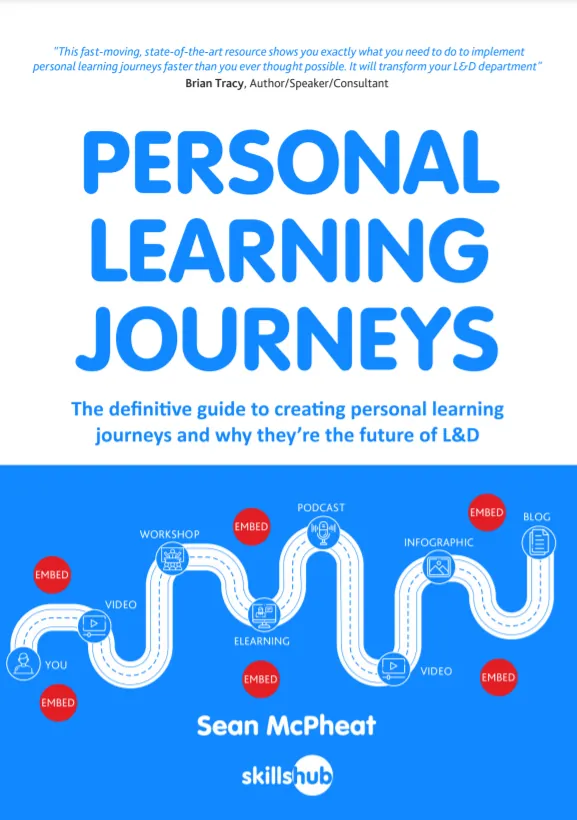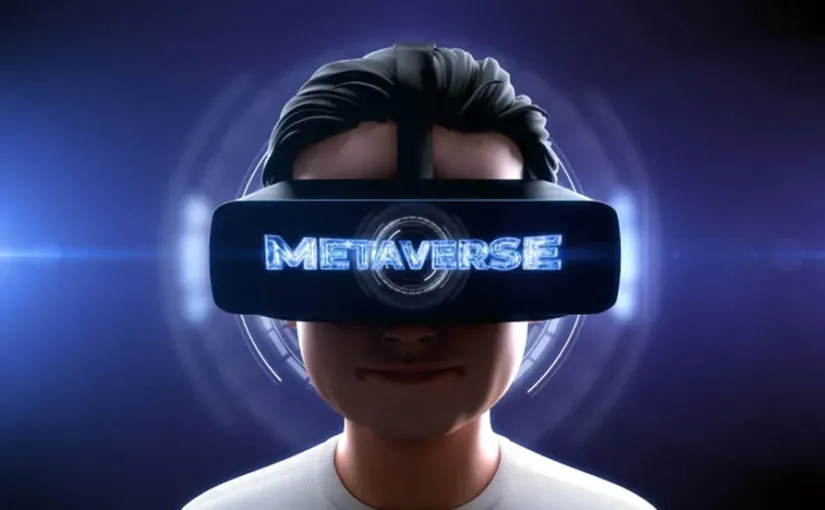
Undoubtedly, the strategies, skills, and technology in the corporate world are ever-changing. In line with this, so should the knowledge base, skills, and values of any workforce.
Employers need to develop their people to help fill the knowledge gap and align their workforce with these changes to stay afloat and meet market needs.
Effective Employee training is crucial for upskilling workers, inducting new hires, increasing employee retention, enhancing the talent management process, and boosting productivity.
While you may successfully execute training in the workplace, various training and development challenges may prevent the training from delivering on all its learning promises. Left unchecked, these setbacks can hamper your training’s return on investment (ROI) and the value it brings.
Skillshub discusses the most common training and development issues in the workplace and offers solutions for how these can be overcome.

Training and Development Problems and Solutions
Work Overload
The modern-day employee has too much to do in too little time. There are a high number of stresses and strains placed on our employees both on and off the field.
Giving your employees more work to do than they can complete during the normal workday will significantly have detrimental effects on their working energy and productivity during any training that you provide for them. Overloaded learners are often also easily distracted, meaning your training materials won’t be absorbed.
How to Overcome:
- Assess your learners training needs, as well as their capacity to learn. Plan their development based on their availability, and motivation to learn and then prioritise the learning with the right methods.
- Avoid eating into the personal time of your people. For example, avoid involving too much preparation or homework in your training.
- Make use of virtual training rather than solely face-to-face sessions, so you can limit travel requirements and days away from normal work routines

Learn How To Create Personal Learning Journeys For FREE!
Overwhelming Content
Too often, corporations subject their employees to training that is too enormous, repetitive, incomprehensible, outdated, or just plain useless. Bombarding learners with too much content can make them feel burdened and cause them to push back or disengage from the training.
How to Overcome:
- To reap the full benefits of training in the workplace, deliver short, useful, and precise information in small, consumable chunks. Microlearning is an effective way to improve the engagement and impact that your workplace training has on your teams.
- Determine if all training elements are necessary and do away with those that aren’t. In addition to this, avoid covering too many topics simultaneously and keep each session highly focused.
- Update your training program every time an internal policy is changed to avoid giving irrelevant outdated information and wasting your employees’ time.
- Try to break away from only supplying conventional in-person workshops and offer mixed media in your training materials to consolidate the learning, such as videos, images, infographics, and graphs.
- Provide eLearning content that includes a wide range of additional resources instead of just courses.
Ineffective Training Methods
Not all learning techniques are equally effective. For example, traditional workplace training techniques such as in-person workshops or instruction manuals may not be the best route for your people if they are used to learning visually or via technology in their own time It’s important to identify the types of training your teams respond well to and are most applicable to their roles, and adapt your training courses accordingly.
Elements of ineffective training that may limit training and development in the workplace:
- Relying on out-of-date training programs and information.
- Inconsistent training.
- Inconvenient timing.
- Boring material.
- Being resistant to changes in training and a “we’ve always done it that way here” mindset.
- Off-the-shelf learning, instead create bespoke eLearning solutions that are relevant to your teams.
How To Overcome:
- Consider more interactive and illustrative training methods such as hands-on or on-the-job training, simulation learning, role-playing, peer training, coaching or mentoring, and technology-based learning.
- Create easy, impactful training programs. Include illustrative materials in your training such as videos, pictures, and graphics. Consider making videos that speak directly to your learners and make them accessible for re-watching at a later date.
- After the training, conduct post-training assessments to determine if the learners retained and applied what they learned. Remember, studies indicate that learners forget an average of 70% of what they have been taught within 24 hours. So, you will need to reinforce training if you desire a better retention rate.
- Look at using an LXP to deliver a personalised, engaging learning experience.

Varying Types of Learners
In today’s diverse, multi-generational workforce, many facilitators deploy training methods and content that may not be engaging to and consumable by the entire workforce. When it comes to addressing such a wide variety of people, it isn’t easy to find a one-size-fits-all solution. Trainers need to tailor their training programs to various learning styles, ages, skill sets, and abilities.
Some of us prefer traditional training methods, whereas the more digital-savvy younger generation may be much more at home with remote online training, micro-learning, augmented reality and mobile learning. Other learners benefit more from collaborative or group training sessions where they can talk about what they are learning. To combat this training and development problem, it is important to tailor your training and find the right mix to engage your learners.
How to Overcome:
- Use a personalised learning journey approach to address individual learning needs instead of using a single strategy to address all learners.
- Trainers should collaborate and engage with each learner to identify their abilities, preferences, and interests. They should then adjust future training programs based on their different tastes and needs.
- Deploy your people as a learning asset, since they can communicate what they have learned to their peers with more simplicity and clarity.
Digital Transformation
Let’s face it; there is a digital skills gap between employees. With the rapid adoption of new technologies and techniques, some employees will be in the lower stages of the technology adoption curve.
More industries are adopting training technologies such as video, artificial intelligence, intercom systems, conference calls, cloud, LMS, and virtual classrooms. However, there will be employees who are unfamiliar with these digital tools and are reluctant to dive into the technological space. As a result, they are often left disengaged.
How to Overcome:
- Identify gaps in your teams not only in their skills but also in their experience with technology.
- Come up with an effective migration strategy which may entail reskilling the entire workforce on how to utilise new tech.
Costly Training Expenses
As rewarding as it is, delivering training in the workplace can be pretty costly. Employee training will set you back direct and indirect expenses such as training materials, instructor fees, staff time replacement, hired venues, travel and accommodation fees, and contingencies.
Many corporations are still struggling to recover from the economic recession following the Covid-19 pandemic. So, if there isn’t an ROI on the training budget, it is likely to face a budget cut.
How to Overcome:
- Manage your training budget effectively and look for ways to reduce expenses, such as digital adoption.
- Figure out if all your current training elements are necessary and valued, and eliminate those that aren’t.
- Try to cut expenses and avoid purchases by reusing material, using locally available in-house training materials, and introducing virtual training.

Geographic Limitations
If the company is multinational or geographically dispersed, it can be difficult to provide simultaneous training to all the targeted workforce. Apart from distance, which makes it hard to carry out face-to-face training, geographic restrictions also pose language and cultural differences. While a particular training program may be successful in one country or region, it may sometimes fall flat in another.
That’s not all. Global companies usually spend much more on employee training and development due to the increased cost of travel and accommodation, translation costs as a result of language, and e-training costs should they choose to go virtual.
How to Overcome:
- Consider training your dispersed workforce from online platforms, video conferences, and webinars, among others.
- You may want to engage an online learning management system (LMS). An LMS efficiently provides remote workforce training, organising content, communicating and tracking learners, and reporting on the learner. In addition, an LMS allows your people to learn from anywhere they choose.
Negative Company Culture
A company’s culture, traditions, and values are key motivational forces for its workforce. This explains why some companies like Apple offer lower salaries than other industry giants. However, because of their strong culture and values, the most exceptional of talents in the tech space will forgo more lucrative offers for a chance to work for Apple.
Nonetheless, strict cultures of office discipline, scrutiny, and micromanagement can create tensions and frictions that may affect the effectiveness of training. Also, cultures that encourage competition among staff, such as ‘Employee of the Month’ or competitive bonuses, may escalate to result in hyper-competition among the team. Overfocus on profits and lack of empathy are other office cultures that may be toxic.
How to Overcome:
- Look out for warning signs of toxic office cultures that may be impacting your business or corporation. Then, take deliberate action to fix the problem without giving up the norm.
- Leave room for employee engagement.

Lack of employee engagement
Keeping your employees engaged throughout training is arguably the most challenging learning and development issue to overcome, particularly as people’s attention spans are becoming increasingly shorter. Where previously you may have offered your teams full days of training periodically, you may want to consider how much of that day’s learning will actually be engaged with and absorbed.
How to Overcome:
- Consider offering your training little and often to employees, for example, blocking out half a day or a couple of hours for each member of the team per week to invest in training. Shorter bursts of training will improve employee engagement, while also allowing your employees to more easily fit the training into their schedules.
- Another way to increase employee engagement in your training and development is to incorporate gamification techniques, like quizzes or team games, to turn training into a fun, collaborative activity that your teams look forward to.
Ineffective measurement of training impact
Another big training and development issue faced by workplaces is measuring the impact and effectiveness of the training you’re offering. It can be hard to turn training into quantifiable metrics, however working out the ROI of the money your company invests into training can help you to educate, drive and improve future training programs.
How to Overcome:
- To make sure the training you offer is measurable, you should set clear learning outcomes and SMART objectives for your employees. This way, once the training is complete, you can more effectively identify whether these have been achieved or whether further training is needed.
- Another method to use is Kirkpatrick’s Model of Evaluation, which utilises four levels of evaluation to assess the understanding and impact of your training.
Lack of communication with employees
One of the easiest mistakes and learning and development issues that can occur within a company is to not communicate with your employees. More specifically, the people that will be receiving the training. This can lead to your training being completely off the mark, unrelatable and invaluable, risking the time and money spent being wasted.
How to Overcome:
- Speaking to your employees in a relaxed manner and asking their opinions and thoughts on the areas they require training in and the types of training they enjoy can allow you to design training to suit those individuals.
- You could have casual group meetings or informal one-on-one chats with specific individuals to discuss what they work on day-to-day, any current challenges they may be facing, their interests and disinterests and more.
Final Words
There’s no question about it; prioritising employee training in your business is key to a company’s future and success. But while empowering employees and fostering the culture of continuous learning in the workplace, be on the lookout for the above challenges that may hamper the productivity of the training. Thankfully, we have outlined all the different ways of mitigating these setbacks.
Skillshub offers an eLearning platform packed with engaging training courses and content for you to utilise for your teams. We also offer bespoke eLearning services where you can create unique training content and resources to suit your company’s niche and requirements. Speak to our team or request a free demo today to explore the platform for yourself.
If you’re ready to level up your L&D strategy with the help of an eLearning company, get in touch with us today!













